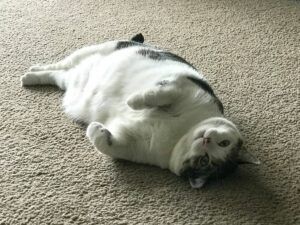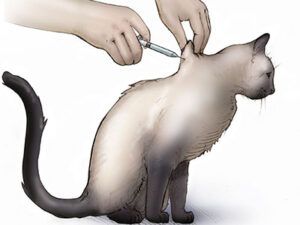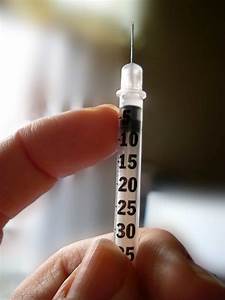It is possible that my cat has diabetes. The vet told me it’s a possibility because his blood sugar was elevated on both trips I’ve made with him to the vet in the last year.
I thought the high blood sugar was more likely to be stress-related, as he is a very timid cat, afraid of everything, and being in the shelter did not help things. In there, though always afraid, he had no place to hide.
He was so relieved to get out of there, and I think both trips to the vet frightened him. I think he believed he would be taken back to that place. To him that would be a terrible fate.
Now I wonder, especially since on the second visit, his blood sugar level tested a bit higher than the first time. He’s showing other signs that he might be diabetic, though they could be related to the slow-down of his kidney function.
Poor old cat! I’m hampered here, because there is no vet. It’s expensive to fly to Juneau, and I can afford to go only in dire emergency. I’m hoping he will be okay for a while.
So, what is diabetes in cats? Diabetes mellitus is a condition in which the body does not produce insulin properly, or it produces it and cannot absorb it properly.
It’s an endocrine problem. The cat’s pancreas does not produce enough insulin, and the body’s cells become starved for sugar. This stimulates the body to produce more and more sugar, but without  insulin, it cannot be absorbed and the cat’s blood sugar becomes very high.
insulin, it cannot be absorbed and the cat’s blood sugar becomes very high.
Recognize the clinical signs of diabetes in your cat and seek treatment early — the sooner the better. Here are the signs you might see:
- Excessive urination
- Excessive water drinking
- Urine does not smell because it is diluted with excess water
- Obesity; later in the disease, weight loss
- Wasting of muscle over the back
- Acting hungry, or sometimes losing appetite
- Lethargy
- Diabetes nerve problems causing the cat to walk “lower” on hindquarters
A male cat is more apt to contract diabetes than a female.
What Are The Types Of Diabetes?
There are two types of diabetes: Type I and Type II. In Type l, the body fails to produce insulin, and will require life-long insulin therapy.
This type is more commonly seen in dogs, while Type II is more common in cats.
In Type II diabetes mellitus, the body produces small amounts of insulin, but not enough. This type is often related to obesity, causing the body to be insulin-resistant.
This Type II can be transient. It might only require a diet change, and months of insulin therapy, instead of a life-time.
Treatment Of Diabetes In A Cat
Insulin therapy is the main type of treatment in cats. Typically, insulin injections are given twice a day, though some cats only need an injection once a day.

Injections are given under the skin. To give your cat an injection, pull the loose skin between his shoulder blades with one hand. With the other hand, insert the needle. It goes directly into the indentation made by holding up the skin.
Draw back the plunger slightly. If no blood appears in the syringe, inject gently.
Tips For Treatment
Here are some treatment tips from the Cornell University Feline Health Center:
- Though treating your cat may sound difficult, for most owners it soon become routine.
- To get the best results for your cat, work very closely with your veterinarian.
- Once your cat is diagnosed with diabetes, the sooner you start the insulin therapy the better.
- It can be helpful if you do home glucose monitoring.
- It’s also beneficial to track your cat’s water intake, activity level, appetite, and weight.
- To help diabetic cats maintain proper glucose levels, serve a low carbohydrate diet.
- If treated carefully, your cat’s diabetes may go into remission.
- If your cat shows signs of hypoglycemia, such as lethargy, weakness, tremors, seizures, or vomiting, apply honey, a glucose solution, or dextrose gel to the cat’s gums. Contact your vet immediately.
Types Of Insulin Used
Many types are available. It is best to leave the choice up to your veterinarian, as he will have his preferences, depending on his experience or what he’s been taught.
Glargine (Lantus) insulin is often recommended when a cat is newly diagnosed. There’s a belief that a cat has the greatest chance of going into remission (no longer needing insulin therapy) if they start out using Lantus insulin.
This insulin is quite expensive, but if it gives the cat the greatest chance of going into remission, it may end up being the most economical choice.
There are other types, including NPH, Novolin N, Vetsulin and PZI (Prozinc). This latter is also more expensive, but usually works most consistently and with a more lasting effect.
Can You Give Oral Drugs?
Glipizide, an oral drug, has been used. There are other oral medications. However, these do not work as well on a cat as does an injection.
 Sometimes there is no choice. If you are very uncomfortable giving shots, or if the cat will not tolerate injection, oral medication must be used.
Sometimes there is no choice. If you are very uncomfortable giving shots, or if the cat will not tolerate injection, oral medication must be used.
When the vet is first establishing a proper medication for your cat, you may have to return to him quite regularly for the first few weeks until the optimum dosage is determined.
There are no natural or holistic therapies for cat diabetes, though making sure the cat has a high-protein, low-carbohydrate diet is one “natural” treatment.
CBD oil has been found to be effective in helping with symptoms of the disease. For example, your cat may experience nausea and vomiting, and CBD may help relieve these, which can be very helpful
How Much Does Treatment Cost?
The cost will vary from cat to cat. The variation in cost depends on the type of insulin used, if the cat also has other health conditions, if you can do follow-up glucose curves at home, food costs, and how long your supply of insulin lasts.
Here are some general ideas on cost:
Insulin: Price ranges from $35 to $325 per bottle. In the long run, the more expensive one might end up being cheaper, as there is a greater chance of remission. One bottle will last from one to six months.
Glucose Curves: These can range in cost from $40 to $200, and must be done every two to four weeks until the cat is well-regulated. Then they will need to be done every one to six months thereafter.
If you choose to do the glucose curves at home, you can get a glucometer (blood-measuring kit) for $40 to $50. With this kit, you can do up to ten curves as well as some spot glucose checks.
Your vet can help you decide if doing these tests at home are feasible.
Concurrent Diseases: These could include other systemic diseases, such as kidney disease, heart disease, or overactive adrenal glands. Interfering conditions also include urinary tract infections and dental disease.
What Is Ketoacidosis?
A cat with uncontrolled diabetes can develop ketoacidosis. This condition will occur when cells starved for glucose will begin to break down fats for energy. This process creates chemicals called ketones, which make the blood more acidic.
The condition of ketoacidosis is a medical emergency. If your cat develops this complication, he will require hospitalization for proper management. Without treatment of this condition, your cat will die.
Prognosis
If you can manage your cat’s care on the schedule needed, you can help your cat to manage this disease. You cannot cure him. However, it is possible for him to go into remission so he can do without the insulin for four months.
He will still have to stay on a high-protein diet and should be examined by the vet regularly to check his blood sugar level and to determine if he needs to go back on insulin.
If you can successfully do what is necessary to manage blood sugar levels, your cat can live for years with this condition.
Here are the references I used for this post:
resources.bestfriends.org/article/cat-diabetes-causes-signs-diagnosis-treatment

